-
近年来,由于抗生素在医疗和养殖领域的大量使用,促使动物体内和环境中出现了抗生素抗性基因(antibiotic resistance genes,ARGs)。2006年,美国学者PRUDEN等[1]将ARGs定义为一种新型环境污染物,它具有可复制、可传播和不易消亡的生物化学特性,从而可在环境中大量积累和广泛存在。目前,已发现的ARGs种类繁多,包括四环素类、磺酰胺类和β-内酰胺类[2]等,且这些ARGs已在城市污水处理厂中检出。城市污水处理厂不仅是ARGs 聚集、转移、进化与增殖的重要场所[3-4],也是再生水与自然水体的纽带。这些ARGs在环境中的转移和传播将会对人类的健康造成威胁。
城市污水处理厂中常规的厌氧/好氧处理工艺对ARGs有一定的削减作用,但效果并不显著。其中,二沉池中污泥沉降是污水厂去除ARGs的主要机制之一[5]。近年来,膜处理技术在去除ARGs的过程中发挥了重要作用,尤以超滤(ultrafiltration,UF)最为突出。MUNIR等[6]对比了MBR和传统的活性污泥、氧化沟对3种ARGs(tetW、tetO、sulI)的去除效果,发现MBR的出水中ARGs的含量比常规处理少了1~3个数量级。张启伟等[7]利用混凝沉淀-超滤组合工艺对4种ARGs(tetA、tetG、sul Ⅰ、sul Ⅱ)进行了去除,发现去除率达到0.5~3.1个数量级。另有研究[8]表明,聚醚砜超滤膜对ARGs的去除效果优于聚偏氟乙烯超滤膜,且截留分子质量越低,去除率越高。
超滤对ARGs的去除效果虽然较好,但在使用过程中也存在膜比通量下降快和膜污染严重等问题。以往的研究多集中于处理工艺的研究上,对于如何减缓膜污染则研究较少。本研究将生物粉末活性炭(biological powdered activated carbon,BPAC)与UF联用,比较了在不同BPAC投加量下,组合工艺对抗生素抗性基因(tetA、tetW、sul Ⅰ、sul Ⅱ)的去除效果,并探讨了投加BPAC对膜比通量的影响,通过构建膜污染模型,对BPAC缓解膜污染机制进行了分析。
全文HTML
-
实验原料:杏壳粉末活性炭(粒度200~300 目、比表面积587.38 m2·g−1、平均孔径3.351 nm、碘值2~13 mL·g−1、亚甲基蓝吸附100~150 mL·g−1);超滤膜为聚醚砜(PES)平板膜,切割分子质量为100 kDa;实验中所用BPAC是将PAC投加到实验原水中,经培养驯化得到的;实验原水为北京某污水厂二级出水,水质指标如下:浊度0.10 NTU, TP 0.36 mg·L−1,DOC 59.14 mg·L−1,pH 7.6, 氨氮1.86 mg·L−1。
实验仪器:超微量分光光度计(NanoDrop8000,美国Thermo公司);总有机碳分析仪(TOC-VCPH,日本SHIMADZU公司);水浴恒温振荡器(SHA-B,常州国华电器有限公司);凝胶渗透色谱仪(PL-GPC50,美国Agilent Technologies公司)。
-
本实验采用全程死端超滤装置,实验装置如图1所示。该系统由氮气瓶提供稳定压力,使超滤杯中的水样完成过滤,操作压力为0.10 MPa,滤后液流入电子天平上的烧杯(容积为400 mL)中,液体质量由天平记录(每5 s记录1次),电脑接收并记录随过滤时间增加的电子天平质量数据,在线监测得到数据分析膜通量。
-
1)过滤方法。分别向原水中投加一定量的BPAC,并调节其质量浓度分别为0、20、40、60、80 mg·L−1,在室温下振荡24 h,使BPAC充分吸附水中的污染物。振荡结束后,将混合水样(每次均为350 mL)倒入超滤杯中进行过滤。实验过程采用恒压过滤,电脑记录膜通量随时间变化情况。
2) DOC检测方法。检测前使原水水样经过0.45 μm的微滤膜进行抽滤,去除水中的不溶性有机物质,然后采用总有机碳分析仪测量水中的DOC浓度,测量3次,取平均值。
3)抗性基因检测方法。将超滤杯中的膜片剪碎以提取DNA,使用聚合酶链式反应(PCR)扩增4种ARGs、16S rDNA和 int Ⅰ 1,然后纯化PCR产物,PCR产物浓度合适后,连接至PMD-19T载体上,转化后提取质粒,挑选阳性克隆进行质粒测序鉴定,经鉴定正确的质粒检测OD值,运用计算拷贝数的方法制备标准样品,最后使用实时定量聚合酶链式反应(qPCR)对4种ARGs、16S rDNA和 int Ⅰ 1作出定量。
-
本研究采用经典Hermia膜孔堵塞滤饼过滤模型[9],深入考察BPAC吸附和UF组合缓解超滤膜污染机制,该经典模型见式(1)~式(3)。
式中:t为过滤时间,s;V为过滤累计出水体积,L;k为污染系数;n为污染指数;A为膜有效表面积,m2;J为过滤通量,L·(m2·s)−1。
利用式(1)~式(3),可以将污染指数n值随过滤时间或者过滤体积的变化情况作图,亦可制作d2t/dV2随dt/dV变化的对数图[10-12],考察膜污染状况随过滤时间的变化规律。
该模型公式的推导基于一定的理想条件假设,HUANG等[13]在经典膜孔堵塞滤饼过滤模型的基础上详细推导和阐述了4种过滤污染机制模型,不同的污染类型由式(1)中的n值决定。在不同的n值条件下,将式(1)通过数学转化,可得到不同类型的过滤方程(如表1所示)。
1.1. 实验原料与仪器
1.2. 实验装置
1.3. 实验方法
1.4. 分析方法
-
BPAC-UF组合工艺对ARGs的去除效果见图2。可以看出,污水厂二级出水中4种ARGs均有检出,且磺胺类抗性基因浓度较四环素类抗性基因浓度高。其中,sulⅡ的浓度最高,为106.79~107.21拷贝数·mL−1;sul Ⅰ的浓度次之,为106.73~107.19拷贝数·mL−1;tetA和tetW的浓度最低,分别为105.40~106.10拷贝数·mL−1和103.32~103.49拷贝数·mL−1。经过单独UF后,4种ARGs的绝对丰度均有所降低。其中,tetA下降了1.56个数量级,去除率最高;tetW仅下降了0.86个数量级,去除率最低。投加BPAC后,组合工艺对4种ARGs的去除率比单独UF高约2~3个数量级,在BPAC的投加量为80 mg·L−1时,组合工艺对tetA、tetW、sul Ⅰ的去除率最高,去除的数量级分别为3.73、1.81、3.72个;在BPAC的投加量为40 mg·L−1时,对sul Ⅱ的去除率最高,去除的数量级为4.20个。直接经过UF后,对ARGs的去除作用为UF的机械筛分;当BPAC与UF结合时,活性炭的吸附、微生物的吸附降解以及膜截留协同作用使得ARGs的浓度进一步降低。
-
BREAZEAL等[14]研究了污水中总有机碳和ARGs去除的相关性,发现水中抗性基因和蛋白质有很强的相关性,抗性基因和蛋白质多糖的总浓度有更高的相关系数,这证明水中有机物的去除增强了膜削减抗性基因的效能。实验中向原水中分别投加不同浓度的BPAC,恒温振荡24 h后,经平板超滤膜过滤5 min后,测定膜出水中DOC的浓度,其结果见图3。单独UF和BPAC-UF组合工艺对原水中DOC均有一定的去除效果。对应于不同BPAC投加量(0、20、40、60、80 mg·L−1)处理后,水样中的DOC浓度分别为45.27、35.48、29.17、25.82、27.53 mg·L−1,而单独UF对DOC的去除率为23.5%,去除率较低。相比而言,组合工艺对DOC的去除率比单独UF高,并且随着BPAC投加量的增加,对DOC的去除率先升高后降低;当投加量为60 mg·L−1时,去除率最高,达到56.3%。由于超滤膜对于大分子有机物的去除主要依靠孔径截留来实现,故导致其对有机物的去除率较低。在最佳投加量下,BPAC-UF组合工艺对有机物的去除效果较直接UF大幅度提高,主要是由于粉末活性炭可以通过吸附作用完成对有机物的去除。同时,生长在粉末活性炭上的微生物对有机物也有一定程度的吸附降解作用[15]。但是,当BPAC的投加量过大时(80 mg·L−1),附着生长在粉末活性炭上的微生物数量增多,导致细胞分泌物含量升高,使得原水中有机物的浓度有所上升。
-
有研究表明,水中微生物总量、整合子以及有机物的去除有利于抗生素抗性基因的削减[14, 16]。ARGs浓度与微生物总量、Ⅰ类整合子及溶解性有机物的拟合结果见图4。其中微生物总量以16S rDNA的拷贝数来表征,P<0.05为线性相关显著性的判定依据。如图4(a)所示,4种ARGs浓度与16S rDNA浓度均有显著的相关性,磺胺类抗性基因浓度与16S rDNA浓度的相关性较四环素类抗性基因更为显著。其中sul Ⅰ与16S rDNA的相关性最显著,tetA、sul Ⅱ次之,tetW最弱。相关分析表明,二级出水中微生物的浓度会影响4种ARGs在环境中的转移或传播,且基因种类不同,其影响程度也不同。所以,16S rDNA浓度的降低有利于4种ARGs的去除。整合子作为一种移动基因元件,对于抗生素抗性基因在水平方向上的转移或传播起到了非常重要的作用[17]。如图4(b)所示,ARGs浓度与intI1浓度之间存在显著的相关性,其中tetA浓度与intI1浓度相关性最强,sul Ⅱ浓度与intI1浓度相关性最弱,说明4种ARGs可能结合到I类整合子上,从而可在污水厂二级出水中进行水平转移。如图4(c)所示,四环素类抗性基因(tetA、tetW)及磺胺类抗性基因(sul Ⅰ)的浓度与DOC浓度具有显著的相关性,这说明随着DOC的去除,水中抗生素抗性基因的浓度会有所下降。
-
1) BPAC投加量对膜比通量的影响。膜比通量表示某时刻膜通量(J)与起始膜通量(J0)的比值。不同BPAC投加量下膜比通量随时间的变化情况见图5。由图5可知,直接经过UF时,膜比通量在前4 min内下降较快,而后趋于平缓,过滤周期最后膜比通量仅为0.214。这说明原水直接UF时膜污染严重,膜孔易被堵塞。当原水中投加不同浓度(20、40、60、80 mg·L−1)的BPAC吸附降解后,10 min时的膜比通量分别为0.290、0.253、0.208、0.185。相对于直接UF,投加20 mg·L−1和40 mg·L−1的BPAC可使膜比通量分别提高35.5%和18.8%,而60 mg·L−1和80 mg·L−1的BPAC反而使膜比通量下降。结果表明,虽然BPAC可吸附降解水中DOC并减轻膜污染,但低投加量的BPAC在膜表面形成的滤饼层较疏松,滤饼层的厚度较薄,膜过滤阻力小,造成膜比通量有所上升;而高浓度的BPAC形成的滤饼层密实,滤饼层的厚度较厚,膜过滤阻力增加,从而导致膜比通量下降。
2)膜污染模型拟合分析。直接UF和低BPAC投加量下组合工艺的膜污染模型拟合分析结果见图6。由图6可以看出,直接UF时,膜污染状况与滤饼层过滤模型的拟合度最好,R2为0.995 0;分别投加20 mg·L−1和40 mg·L−1BPAC后,组合工艺的膜污染状况与标准膜孔堵塞模型和滤饼层过滤模型的R2均大于0.99,说明拟合程度均较好。直接UF时,水中的大分子有机物会堆积在膜表面,形成致密的滤饼层,滤饼层过滤模型占主导。投加低浓度的BPAC后,由于微生物的降解作用,水中小分子有机物量增加,进入膜孔,形成标准膜孔堵塞;同时投加的BPAC会在膜表面形成滤饼层,从而形成滤饼层过滤模型。
3) BPAC-UF缓解膜污染机制分析。直接UF和低BPAC投加量下组合工艺的膜污染特征曲线见图7。有研究[18]表明,当超滤膜的污染情况恶化时,膜污染特征曲线的dt/dV和d2t/dV2值会变大。由图7可知,直接过滤时的dt/dV和d2t/dV2值最大,过滤单位水量的时间一直在增加,且增加的速率较快,这表明膜污染随过滤时间的增长愈发严重。当投加低浓度BPAC后,膜污染特征曲线向左下方移动,dt/dV和d2t/dV2值变小,这表明组合工艺的膜污染状况较直接UF有明显改善。其中,20 mg·L−1 BPAC较40 mg·L−1BPAC对膜污染的改善程度更好,这与BPAC投加量对膜比通量的影响结果一致。
2.1. 组合工艺对原水中ARGs的去除效能
2.2. 组合工艺对原水中DOC的去除效能
2.3. 抗性基因去除的相关分析
2.4. BPAC-UF组合工艺的膜污染机制
-
1)对比直接UF,BPAC-UF组合工艺对二级出水中的ARGs和DOC的去除效果更好;其中,对tetA、tetW、sul Ⅰ去除的BPAC最佳投加量为80 mg·L−1,对sul Ⅱ去除的BPAC最佳投加量为40 mg·L−1,对DOC去除的BPAC最佳投加量为60 mg·L−1;组合工艺对ARGs去除率的提高,主要是由于活性炭的吸附、微生物的吸附降解和膜的截留协同作用的结果。
2)水中16S rDNA、intI1、DOC与不同种类ARGs均有显著相关性,16S rDNA、intI1和DOC的去除有利于ARGs的削减。
3)在投加20 mg·L−1和40 mg·L−1 BPAC时,组合工艺的膜比通量较直接UF有所提高。直接UF时,膜污染状况与滤饼层过滤模型的拟合度最好;组合工艺的膜污染状况与标准膜孔堵塞模型、滤饼层过滤模型拟合度均较好;膜污染特征曲线数值表明,组合工艺的膜污染状况较直接超滤有明显改善。






 下载:
下载:


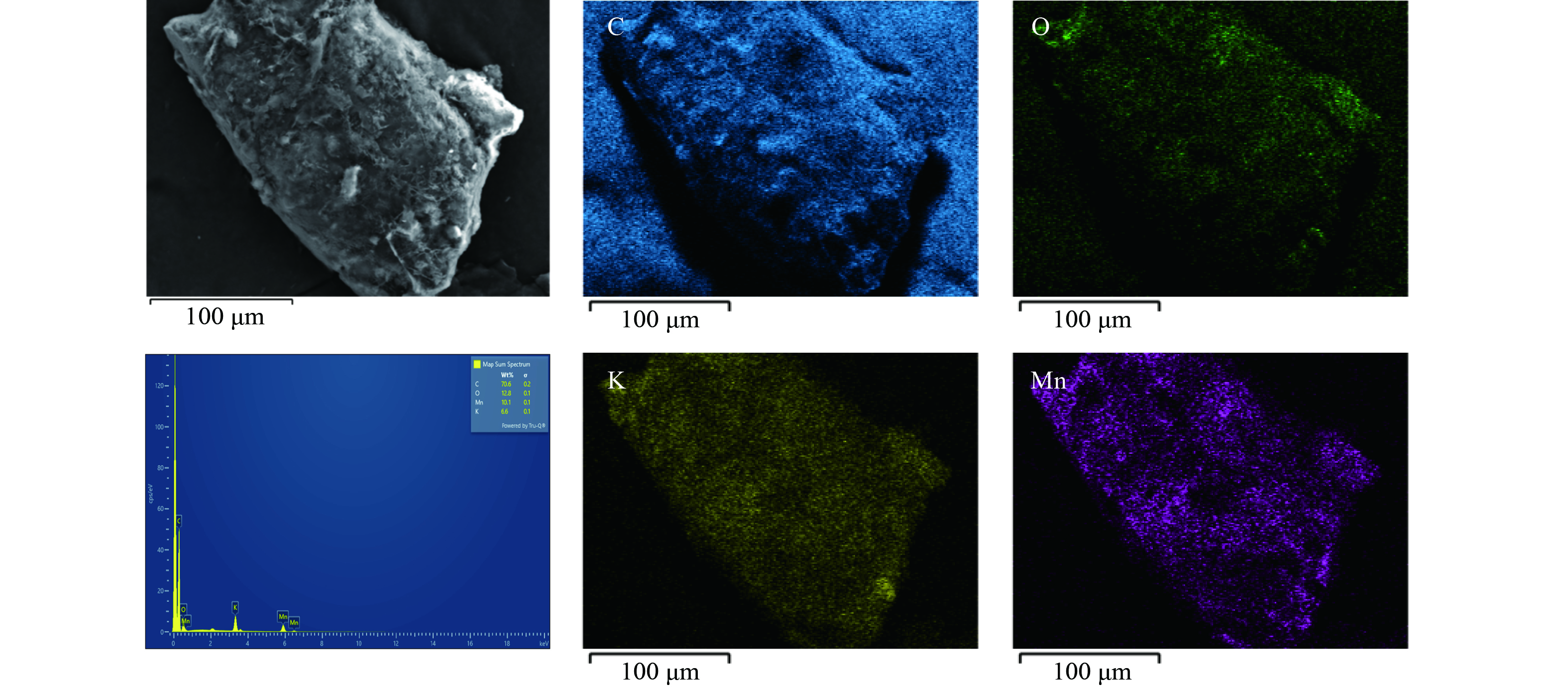

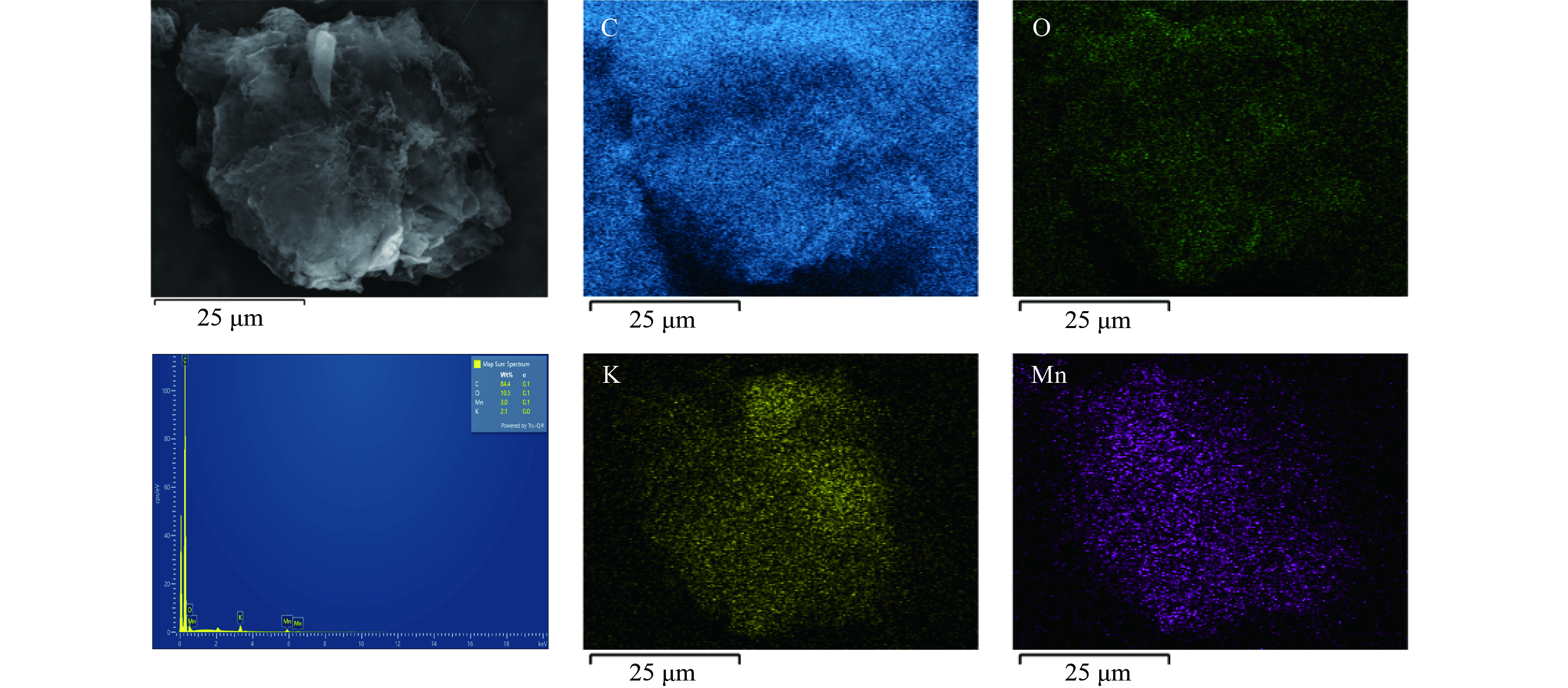

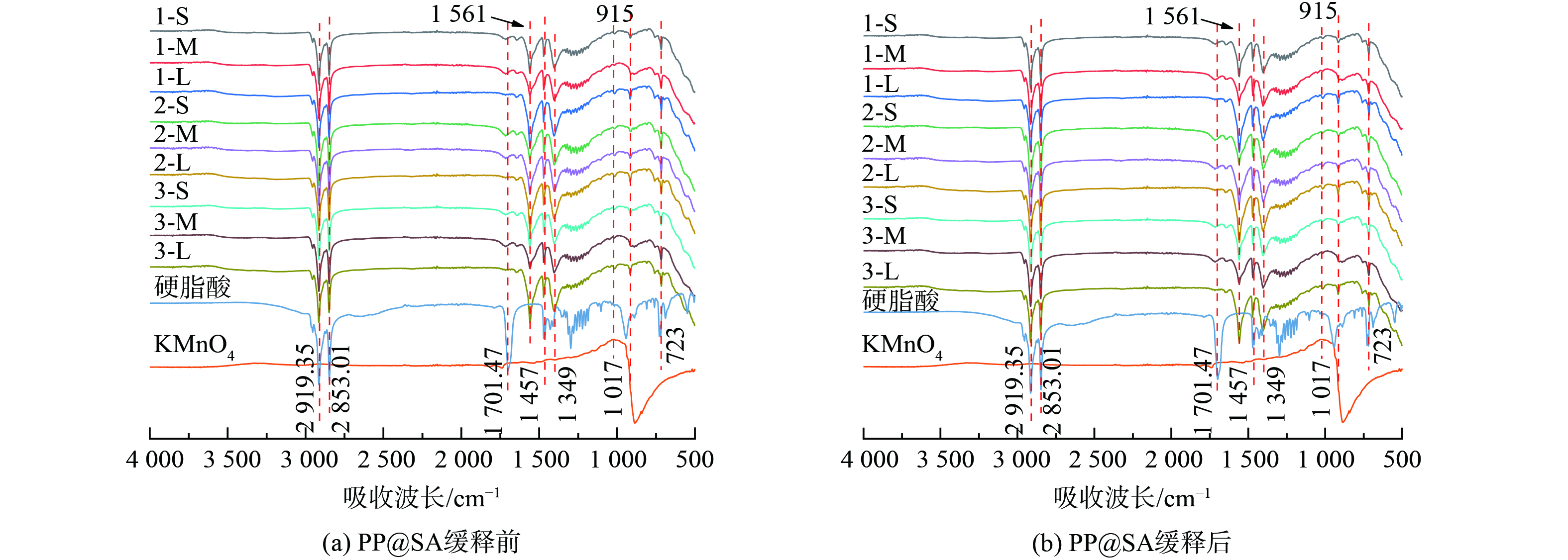



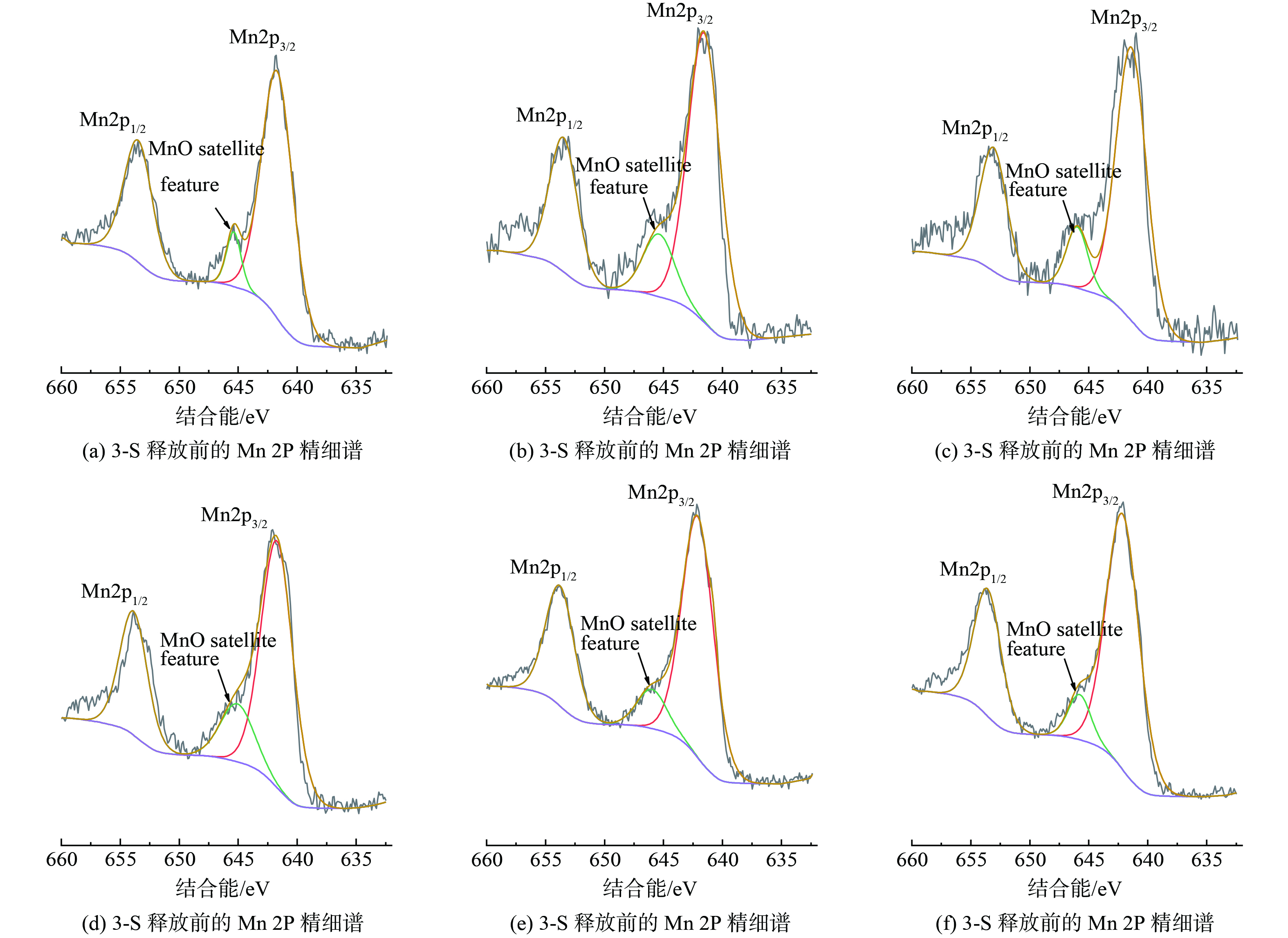
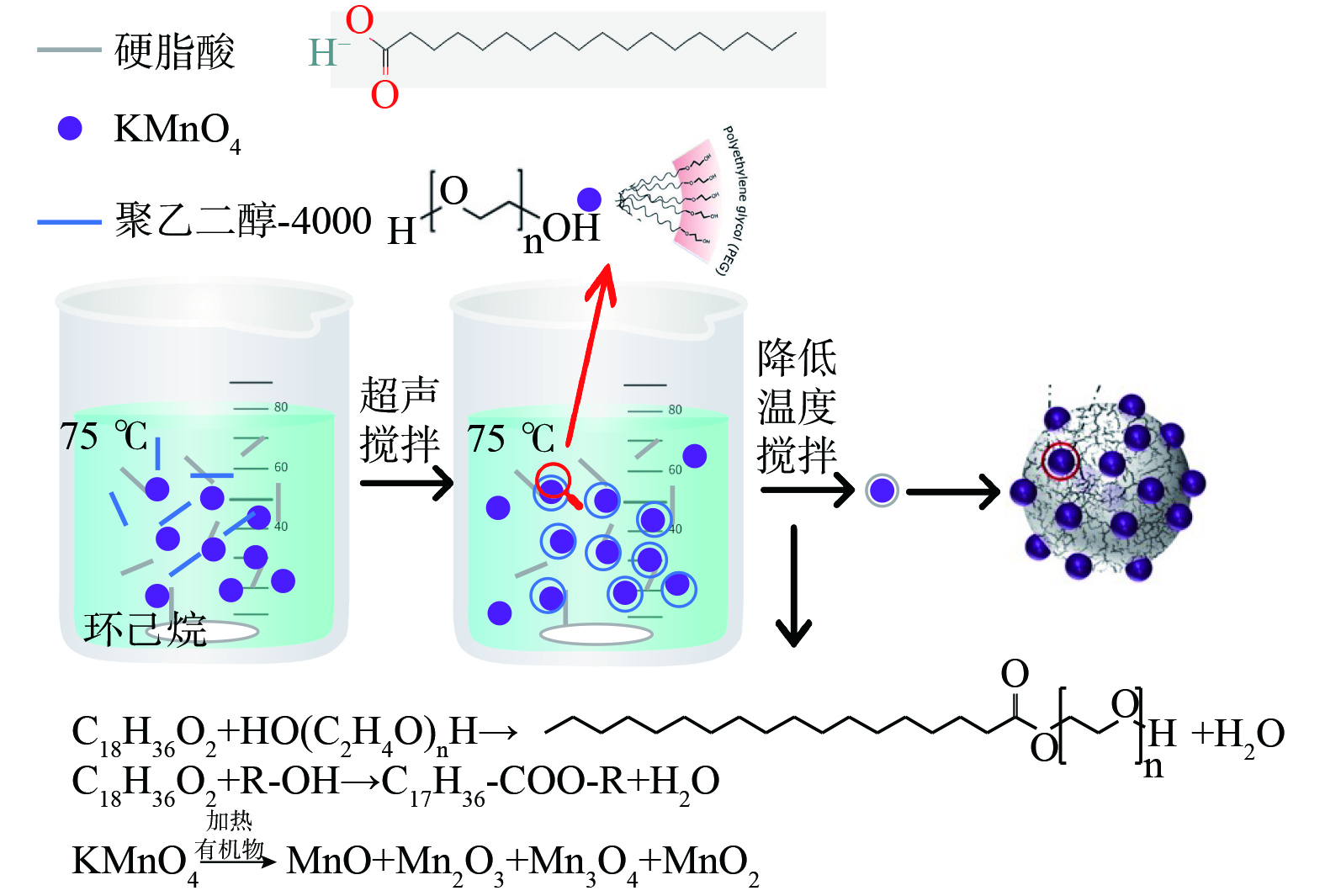
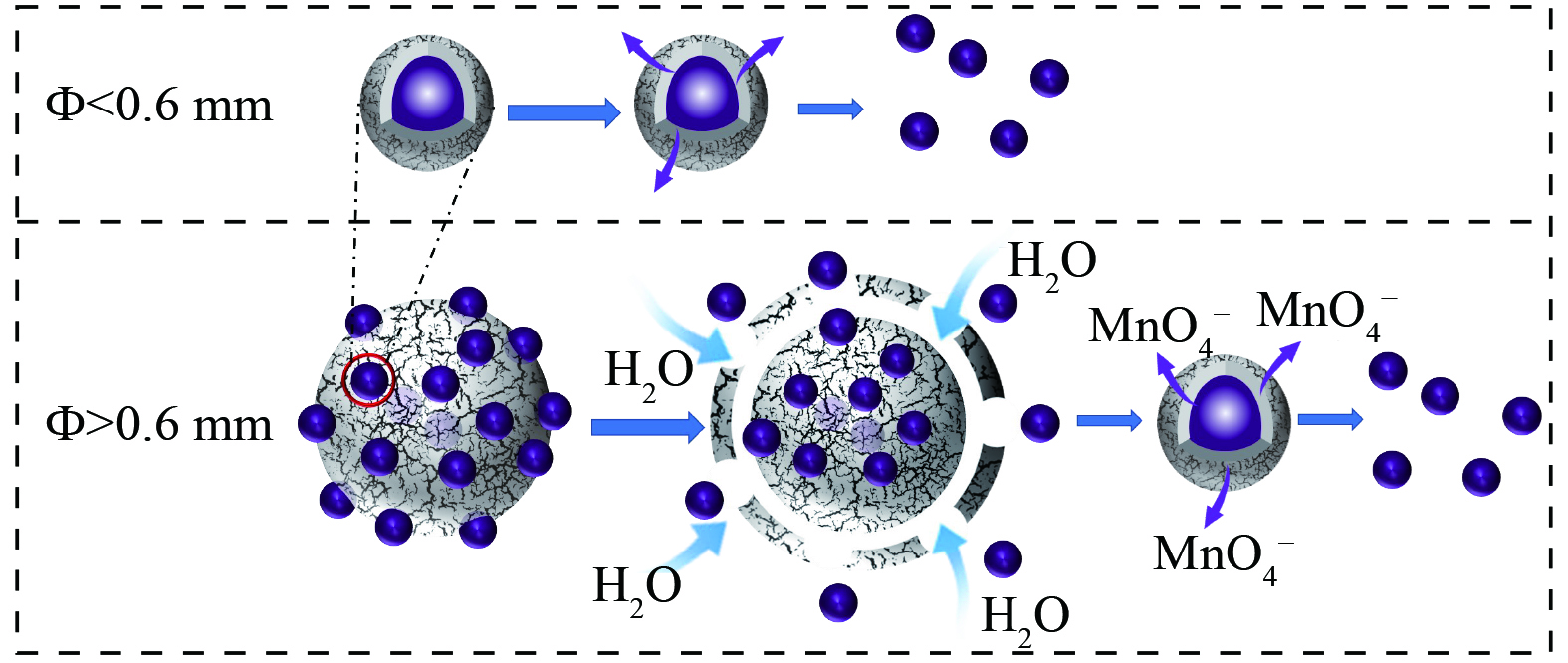
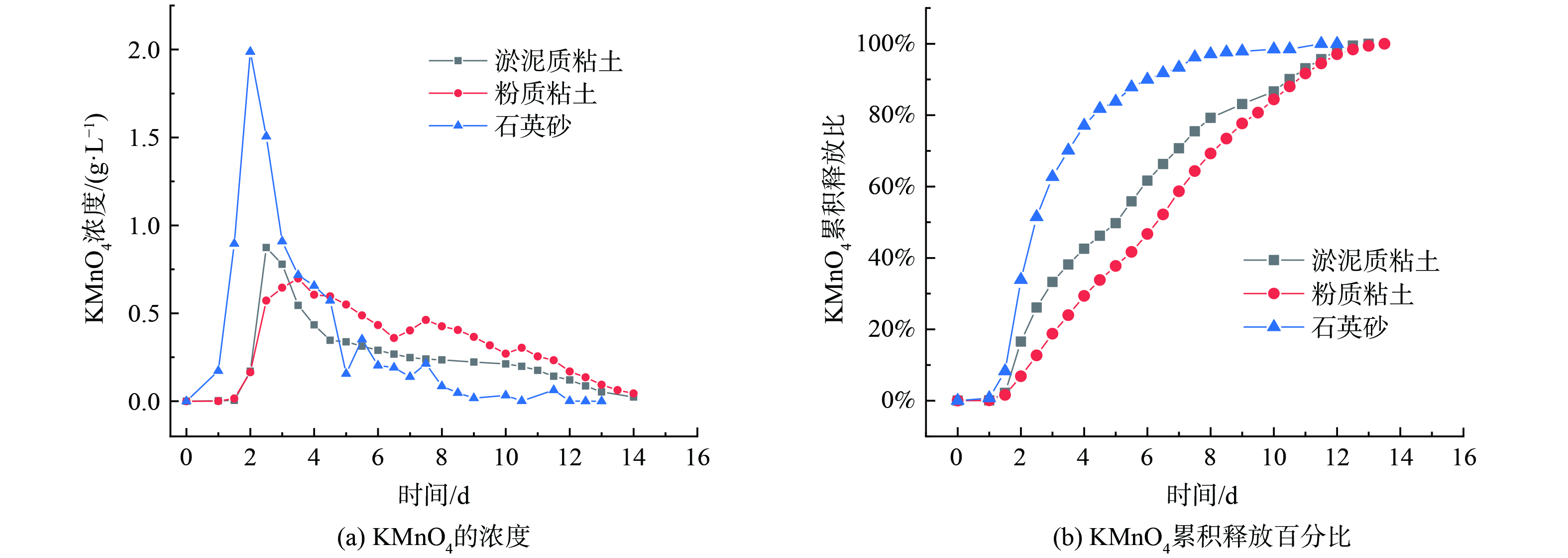
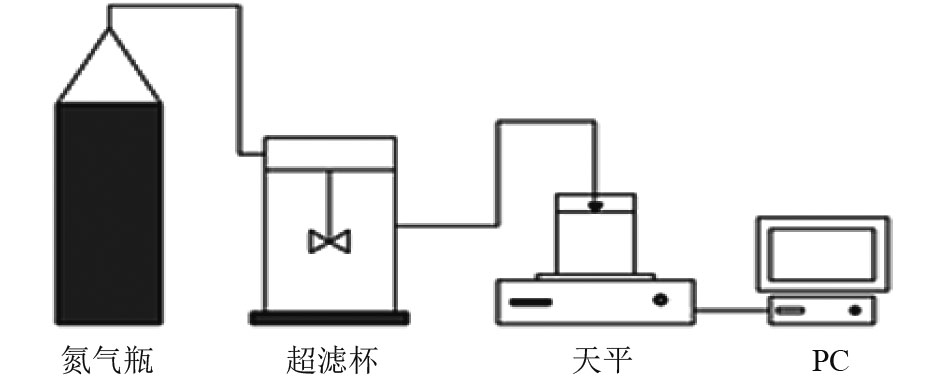
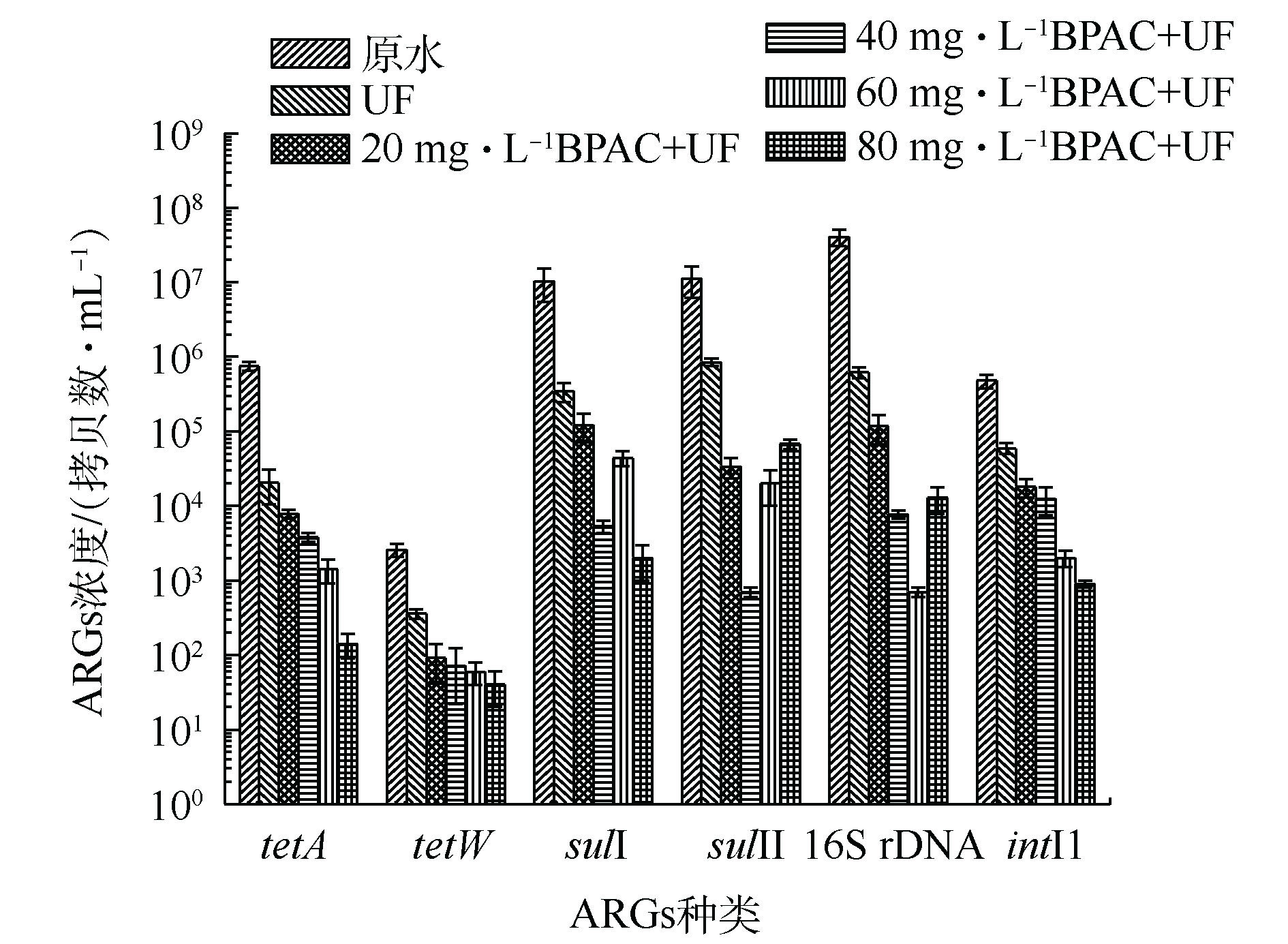
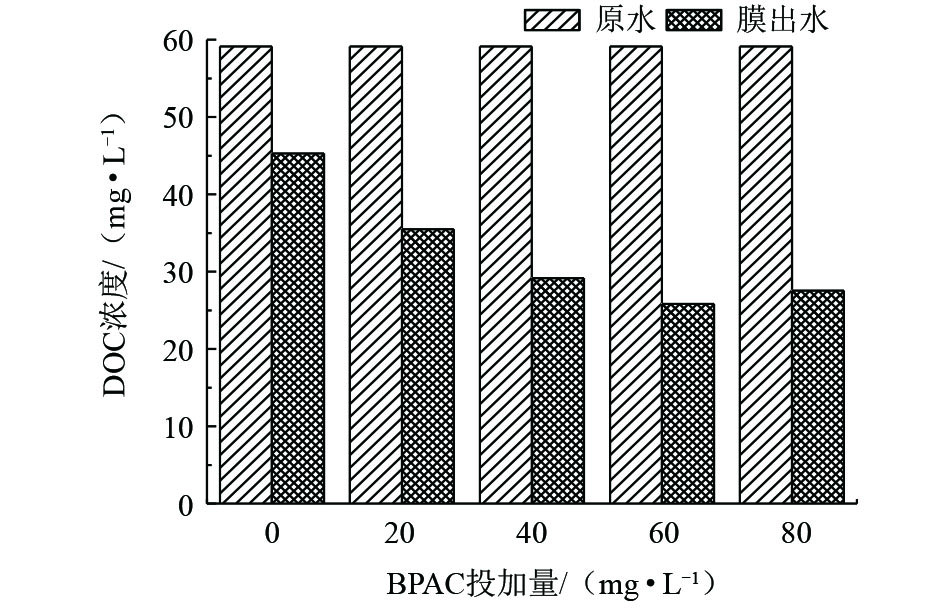

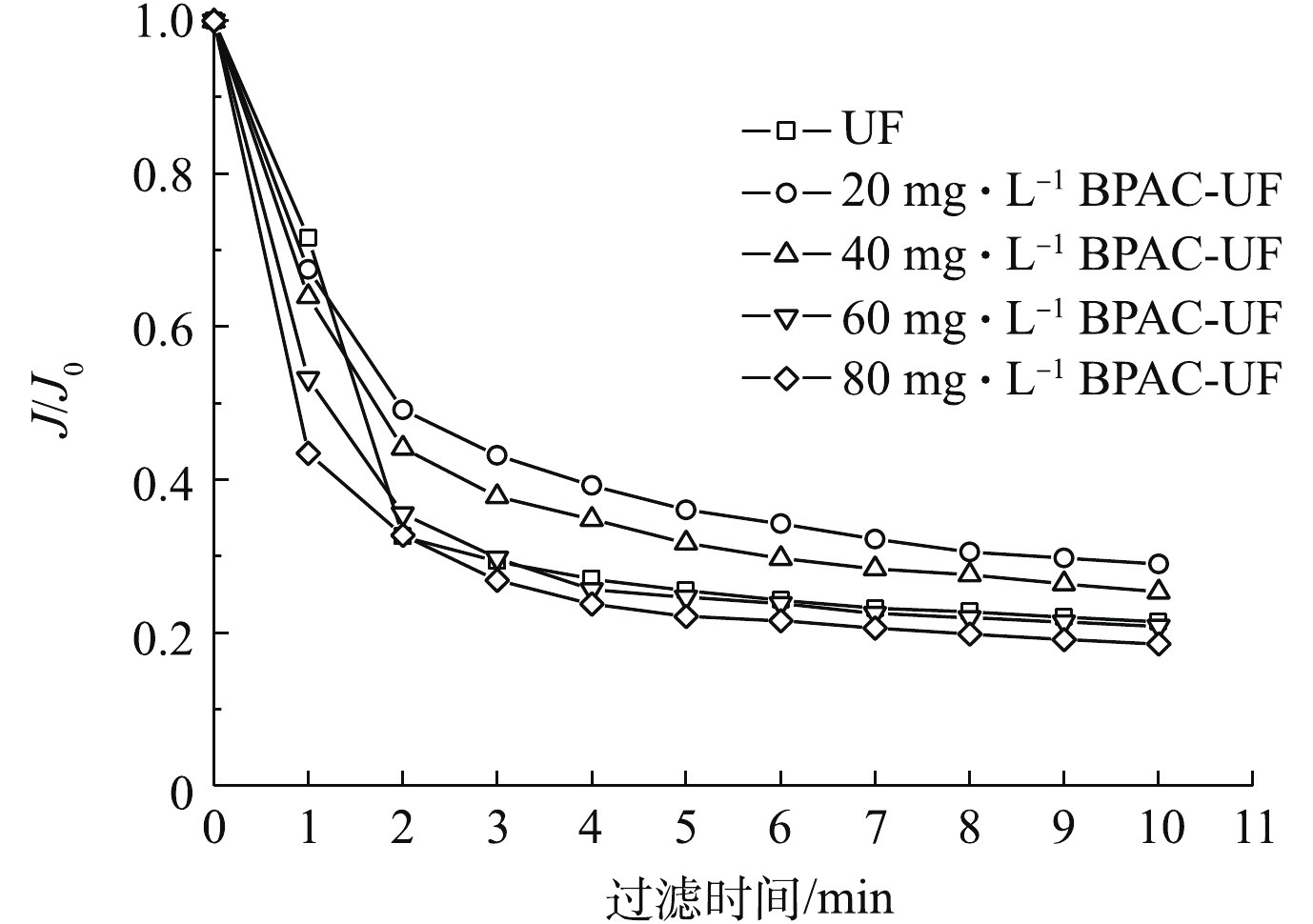
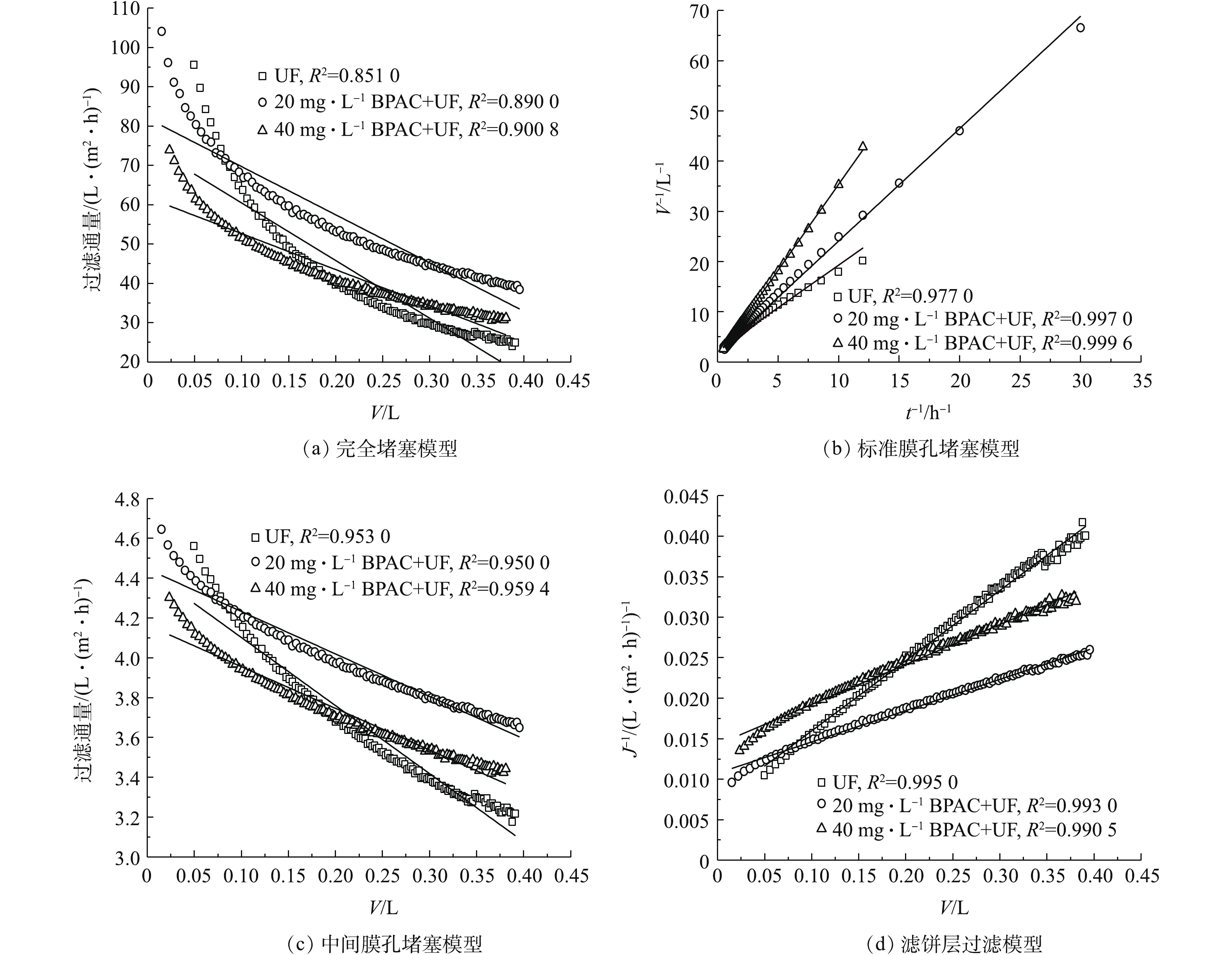

 百度学术
百度学术


